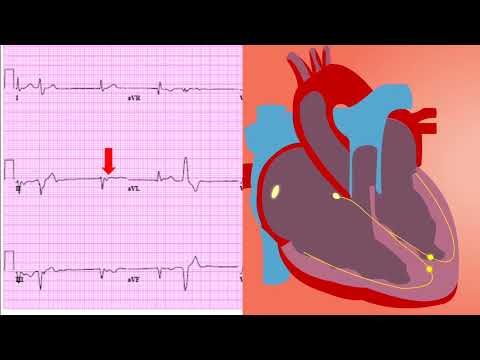🎬 Video Summary
This video provides a detailed overview of the implantable cardioverter defibrillator (ICD), a vital device for managing life-threatening arrhythmias. Learn about the ICD’s function, implantation process, and its role in preventing sudden cardiac arrest. Understand how an ICD works to restore a normal heart rhythm and improve patient outcomes.
🧠Teaching Pearls
- 💡 An ICD is a small device implanted in the chest to monitor heart rhythm and deliver electrical shocks or pacing to correct life-threatening arrhythmias.
- 💡 ICDs are commonly used in patients with a history of ventricular tachycardia or ventricular fibrillation.
- 💡 The device consists of a pulse generator, typically placed under the collarbone, and leads that are threaded through veins to the heart.
- 💡 ICDs can deliver different types of therapy, including anti-tachycardia pacing (ATP), cardioversion, and defibrillation.
- 💡 Regular follow-up appointments are crucial to monitor device function and battery life.
❓ Frequently Asked Questions
Q: What is an implantable cardioverter defibrillator (ICD)?
A: An ICD is a small, battery-powered device placed in the chest to monitor heart rhythm and deliver electrical shocks if life-threatening arrhythmias are detected, restoring a normal heartbeat.
Q: Who needs an ICD?
A: ICDs are typically recommended for individuals at high risk of sudden cardiac arrest due to conditions like ventricular tachycardia, ventricular fibrillation, or heart failure.
Q: How is an ICD implanted?
A: ICD implantation is a minimally invasive procedure where the device is placed under the skin in the chest and leads are guided through blood vessels to the heart.
Q: What are the risks of ICD implantation?
A: Potential risks include infection, bleeding, blood clot formation, lead dislodgement, and device malfunction. However, these risks are relatively low.
Q: How long does an ICD battery last?
A: ICD battery life typically ranges from 5 to 7 years, depending on usage and device settings. Regular monitoring ensures timely replacement.
Q: Can I live a normal life with an ICD?
A: Yes, most individuals with an ICD can lead active and normal lives. However, certain activities that involve strong electromagnetic fields should be avoided.
🧠 Key Takeaways
- 💡 ICDs are essential for preventing sudden cardiac death in patients with dangerous heart rhythm abnormalities.
- 💡 Understanding the different types of therapy an ICD can deliver, such as ATP, cardioversion, and defibrillation, is crucial.
- 💡 Regular device checks are vital for ensuring proper function and extending the lifespan of the ICD.
- 💡 Knowing the potential risks and benefits of ICD implantation helps patients make informed decisions about their care.
- 💡 Post-implantation lifestyle adjustments and precautions can maximize the effectiveness and safety of the ICD.
🔍 SEO Keywords
Implantable Cardioverter Defibrillator, ICD device, ICD implantation, Ventricular Tachycardia, Sudden Cardiac Arrest, Heart Arrhythmia Treatment, Defibrillator Therapy
“`

